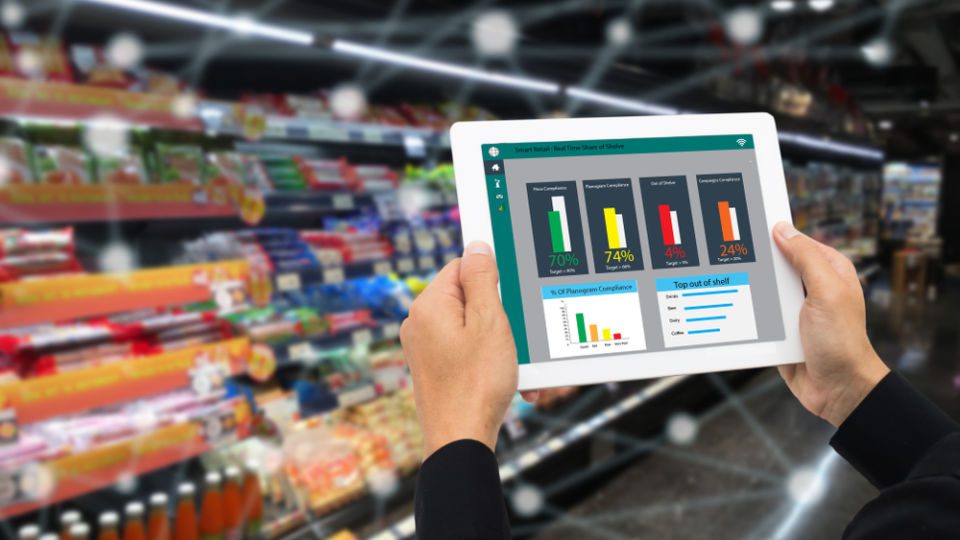 Companies are constantly trying to master the art of a perfectly organized retail shelf. From optimizing placement heights and facings to pinpointing the proper arrangements for aesthetic appeal, companies leverage planograms that instruct store-level stockers exactly how to set up their shelves and displays for customer satisfaction, vendor terms and conditions, on-shelf availability and more.
Companies are constantly trying to master the art of a perfectly organized retail shelf. From optimizing placement heights and facings to pinpointing the proper arrangements for aesthetic appeal, companies leverage planograms that instruct store-level stockers exactly how to set up their shelves and displays for customer satisfaction, vendor terms and conditions, on-shelf availability and more.
However, merchandisers (who own the planograms) often find that their instructions aren’t always executed properly, and that their planograms are mis-executed in the “realograms” — which is a term that describes how a shelf is ultimately set up at the execution level. A lack of planogram compliance can lead to lost sales, customer frustration, out-of-stocks and excess inventory. To ensure realogram-to-planogram (R/P) alignment, retailers need to invest in advanced technology solutions that help them identify any missteps.
The Importance of P/R Alignment
Why is planogram compliance so critical to retail success? There are a number of reasons. First off, ensuring R/P alignment drives sales. Planograms are designed to make it simple for customers to find their favorite products. When they are not followed, customers have a hard time quickly finding the items they need. At best, they will become frustrated as they search for what they need. At worst, they may leave the store altogether and shop with a competitor. If that competitor happens to prioritize R/P alignment, it will develop a larger customer base with better loyalty, as others struggle to grow and thrive at a similar rate.
In addition, planogram compliance allows retailers to fill available eye-level shelf space with their most profitable and popular items to maximize sales opportunities. If the planogram isn’t executed properly, however, sales of these critical items will be lost and eventually threaten margins.
Finally, and perhaps most importantly, R/P alignment also fosters valuable CPG-retail partnerships. CPG manufacturers pay retailers millions of dollars annually for prime product positioning within their stores — such as eye level shelves or areas closest to the front door. Merchandisers, who typically manage these costly agreements, use planograms to communicate paid placement to store-level associates.
When R/P alignment falters, retailers may end up in violation of the terms of their placement contracts, by not displaying the paid-for products where the manufacturer wanted them. This exposes retailers to crippling financial penalties for breach of contract, not to mention losing out on the margins from these misplaced items (national name-brand products often sell at higher margins than off-brands).
How P/R Alignment Tech Works
In order to effectively implement R/P alignment technology, companies first need to have a strong grasp of their needs. To assess them, many retailers start off by checking inventory records or conducting store walks to discover potential alignment issues. Those findings will help determine which technology solutions are suited to address a retailer’s specific R/P alignment needs.
Handheld mobile computers
Employees can operate handheld mobile computers to take photos of shelves. These photos can be sent either straight to a manager to verify R/P alignment, or to the cloud, in which machine learning and computer vision will validate it automatically. For instance, imagine a retail employee takes a photo of her store’s gardening aisle. The garden-department manager compares the photo (the realogram) to the planogram issued by merchandising and finds two brands of potting soil (General Planters and the store’s brand) are misplaced. The store-brand soil is in the spot for which General Planters paid $5,000. The manager then directs an associate to fix the error, avoiding any fallout.
Guided robots
Camera-equipped robots, with their added benefit of mobility, are another option. These robots can be programmed with store layout maps and set to patrol the entire sales floor, or just select “prescribed” areas. The best robots can identify not just R/P misalignment but also spills, trip hazards, on-shelf availability issues and pricing inaccuracies. You can run these robots during store hours, after closing or at any time of your choosing, such as whenever customer traffic is light.
Digital imaging cameras
For retailers with tight labor budgets (which may not provide enough funding for labor-intensive mobile computers), digital imaging cameras may be a better option for R/P alignment. These cameras are typically installed on grocery shelves to monitor inventory across the aisle. Managers can routinely check the camera images for planogram compliance as well as out-of-stocks or replenishment needs. Similar to robots, they can be configured to recognize official planograms and identify when specific products are out of place or missing. They provide a more automated way to keep an accurate stock of product availability.
Prescriptive analytics
Lastly, prescriptive analytics integrates all of the data collected by these different technologies. It takes the information from a mobile computer, digital imaging camera, robot, etc. and provides real-time actions to employees on how to respond to detected inventory anomalies. In essence, prescriptive analytics tells a retailer:
- What is happening
- Why it happened
- How much its financial impact is
- What to do in response
- Who should do it
The future of proper R/P alignment lies in leveraging advanced technology. With innovative digital tools at their disposal, retailers can make proactive adjustments to their in-store layout for perfectly executed planograms, which will maximize sales, limit inventory issues and provide competitive advantages over industry competitors. The future is now, so it’s time to start investing in tech.
Guy Yehiav is general manager and vice president of Zebra Analytics at Zebra Technologies. Zebra Technologies deliver industry-tailored, end-to-end solutions that intelligently connect people, assets, and data to help our customers make business-critical decisions.




